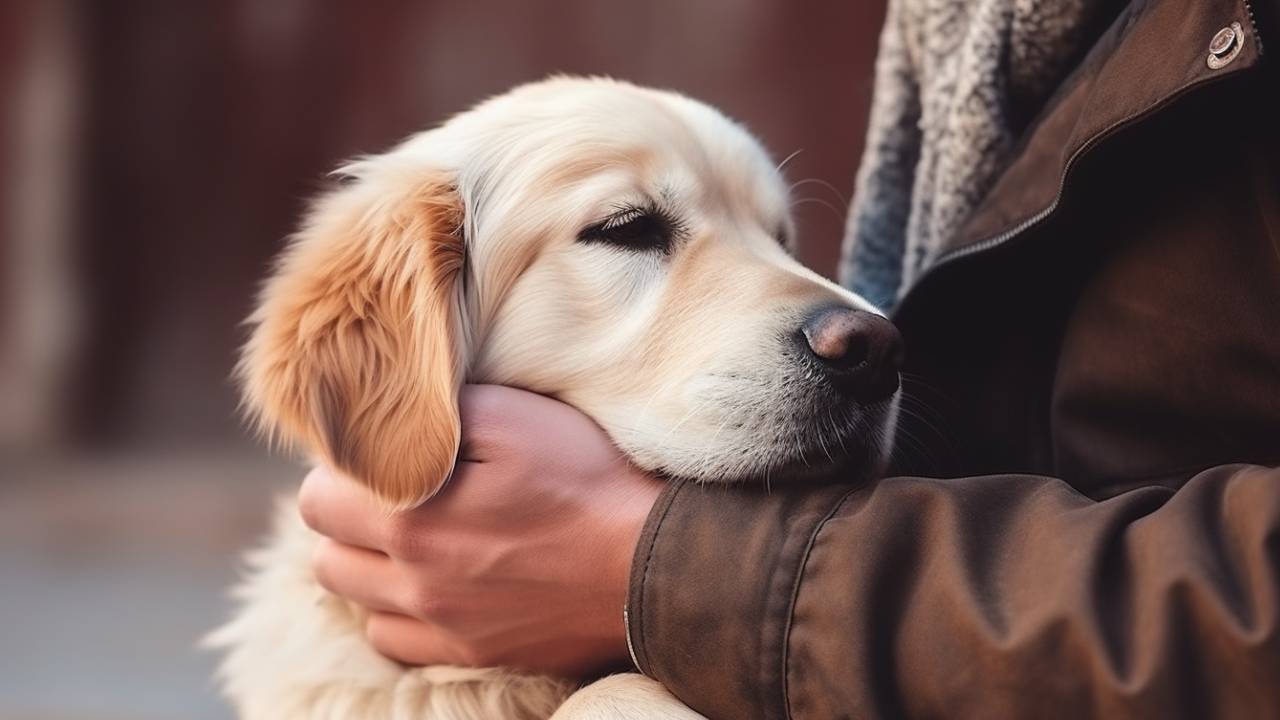Have you ever wondered if your dog’s unique behaviors could be signs of autism? While traditionally diagnosed in humans, there’s a growing interest in understanding whether dogs can exhibit autism-like conditions. This article dives into the intriguing question of can dogs have autism, exploring the signs, research, and approaches to managing such behaviors in our four-legged friends.
Exploring Autism in Dogs
The exploration of autism in dogs delves into the possibility that dogs may exhibit behaviors and neurodevelopmental conditions similar to autism in humans. This study area is relatively new and is still under considerable debate within veterinary and animal behavior communities. The central question revolves around whether certain atypical behaviors observed in dogs can be accurately compared to autistic traits in humans.
Identifying Autism-like Behaviors in Dogs
When considering autism-like behaviors in dogs, it’s important to observe specific traits that may indicate a neurodevelopmental condition similar to autism in humans. Identifying these behaviors accurately requires careful observation and, often, input from veterinary professionals or animal behaviorists. Key behaviors to look out for include:
- Social Interaction Difficulties: Some dogs may show a noticeable lack of interest in socializing with humans or other dogs. They might seem indifferent or less responsive to social cues, which is atypical compared to the general behavior of their species.
- Repetitive or Compulsive Actions: Include excessive pacing, circling, or consistent licking patterns. These actions go beyond occasional habits and may seem to be performed compulsively or obsessively.
- Inflexibility to Change: Dogs exhibiting autism-like traits may display significant stress or discomfort when faced with changes in their environment or daily routine. They may prefer predictability and consistency.
- Unusual Reactions to Sensory Input: Sensitivity or indifference to sensory stimuli, such as sounds, textures, or visual inputs, can also indicate autism-like traits. These reactions may differ significantly from those of other dogs in similar situations.
- Communication Challenges: Difficulties understanding or responding to common commands, inconsistent behaviors, or a general lack of responsiveness can be signs of potential neurodevelopmental differences.
Managing Behaviors Suggestive of Canine Autism
For dogs exhibiting behaviors suggestive of canine autism, several strategies can be employed to manage these behaviors effectively and improve the dog’s quality of life. Implementing these strategies requires understanding and accommodating the unique needs of dogs with autism-like behaviors, ensuring they lead happy and fulfilling lives:
Creating a Predictable Environment: Dogs with autism-like behaviors often thrive in stable and predictable environments. Maintaining a consistent feeding, walking, and playtime routine can help reduce anxiety and stress.
Structured Socialization: Gradual and controlled exposure to new social situations can help. It’s important to monitor the dog’s reactions and proceed at a comfortable pace, avoiding overwhelming scenarios.
Sensory Accommodations: If a dog is sensitive to certain stimuli, reducing exposure to these triggers can help. This might involve creating a quiet and safe space in the home where the dog can retreat if they feel overwhelmed.
Behavioral Training: Working with a professional dog trainer or behaviorist who understands autism-like behaviors can be beneficial. They can provide tailored training techniques catering to the dog’s needs and challenges.
Physical Exercise and Mental Stimulation: Regular exercise and mentally stimulating activities (like puzzle toys) are important for overall well-being and can help manage repetitive behaviors and reduce stress.
Veterinary Care: Regular check-ups with a veterinarian are important. Sometimes, medications may be prescribed to manage symptoms like anxiety or stress, which could exacerbate autism-like behaviors.
Patience and Understanding: Owners must be patient. Recognizing that these behaviors are not a choice but part of the dog’s nature is key to creating a supportive and nurturing environment.

Symptoms and Diagnosis of Canine Autism
Identifying potential signs of canine autism involves observing certain behaviors that deviate from typical canine behavior. These may include:
- Limited Social Interaction: Dogs might show little interest in interacting with other dogs or humans, often appearing aloof or disinterested.
- Repetitive Behaviors: This includes actions like excessive pacing, circling, or repetitive licking, which are consistent and may interfere with normal activities.
- Resistance to Change: Dogs may exhibit stress or anxiety when their routine is altered or when faced with new environments.
- Sensory Sensitivities: Overreaction or underreaction to sensory stimuli (sounds, textures, visual stimuli) can indicate autism-like traits.
- Communication Issues: Challenges in responding to common commands or interacting in usual ways, displaying inconsistent or unusual responses.
Diagnosing autism in dogs is complex and is largely based on ruling out other conditions. Key steps include:
- Behavioral Assessment: A thorough evaluation of the dog’s behavior, preferably by a professional like a veterinarian or animal behaviorist, is essential.
- Rule Out Other Conditions: Conditions like anxiety, trauma, or medical issues can mimic autism-like behaviors. It’s important to rule these out through medical exams and behavioral analysis.
- Genetic and Neurological Testing: While not commonly done, these tests can sometimes help understand the underlying causes of the observed behaviors.
- Observation Over Time: Consistent observation helps distinguish typical behavior from occasional or situational actions.
Understanding the Causes of Autism in Dogs
Investigating the causes of autism or autism-like behaviors in dogs is a complex and relatively new area of veterinary research. While the exact causes remain largely unknown, current studies suggest a combination of genetic and environmental factors might play a role in developing these behaviors.
Genetic Factors
Genetic mutations are one of the primary areas of focus in understanding canine autism. Research has indicated certain genetic markers that could be linked to autism-like behaviors. For instance, studies have pointed to mutations in genes like SHANK3, which have been associated with neurodevelopmental disorders in humans and may have similar implications in dogs. These genes are involved in brain development and neural communication, and mutations in these genes could lead to atypical neural development in dogs, manifesting as behaviors reminiscent of autism.
Environmental Influences and Epigenetics
The role of the environment in the development of autism-like behaviors in dogs is another area of interest. This includes factors such as exposure to toxins, viral infections, or nutritional deficiencies during critical periods of neurodevelopment, especially in utero or early life stages. Such environmental stressors could potentially alter brain development or function, leading to the exhibition of autism-like behaviors.
Unlike genetic changes, epigenetic changes do not alter the DNA sequence but affect how cells ‘read’ genes. Stress, diet, and other environmental factors could cause epigenetic changes that might influence the development of neurodevelopmental disorders in dogs.
The Role of Early Development
The early developmental stages of a dog’s life are crucial for proper social and cognitive development. Disruptions during this critical period, whether due to lack of socialization, trauma, or isolation, could potentially lead to behaviors that are similar to those seen in autism. While not directly causing autism, these factors could exacerbate underlying genetic predispositions or create conditions that mirror autism-like symptoms.
Conclusion
While the question of whether dogs can have autism remains open, the importance of patience, love, and understanding in caring for our canine friends, regardless of their unique behaviors, remains clear. Recognizing and respecting these behaviors strengthens our bond with them and enriches our lives in numerous and sometimes unexpected ways.

FAQs
Can all dog breeds show autism-like behaviors?
Autism-like behaviors are not breed-specific. The expression of these behaviors might vary depending on the breed’s inherent characteristics and individual temperament.
How can I tell if my dog’s repetitive behavior is a sign of autism?
Observing if these behaviors occur alongside other signs, such as difficulties in social interaction or unusual sensory sensitivities, is crucial. A veterinarian or animal behaviorist can provide a more accurate assessment.
Are there any specific tests to diagnose autism in dogs?
No. Diagnosis typically involves behavioral assessments conducted by veterinarians or animal behaviorists, ruling out other medical or behavioral conditions.
Can changes in a dog’s environment lead to autism-like behaviors?
It can trigger stress-related behaviors that might resemble autism-like symptoms. A consistent, safe, and calm environment is recommended for dogs showing these behaviors.
Is medication always required for managing autism-like behaviors in dogs?
Medication is only sometimes necessary and is typically considered when behavioral modifications and environmental adjustments are insufficient. Each case is unique, and treatment should be tailored to the individual dog’s needs.






these lovely creatures do not deserve such torment😭😭😭😭😭
I never knew dogs could have autism…
Are there specific signs or behaviors to look out for in dogs with autism?